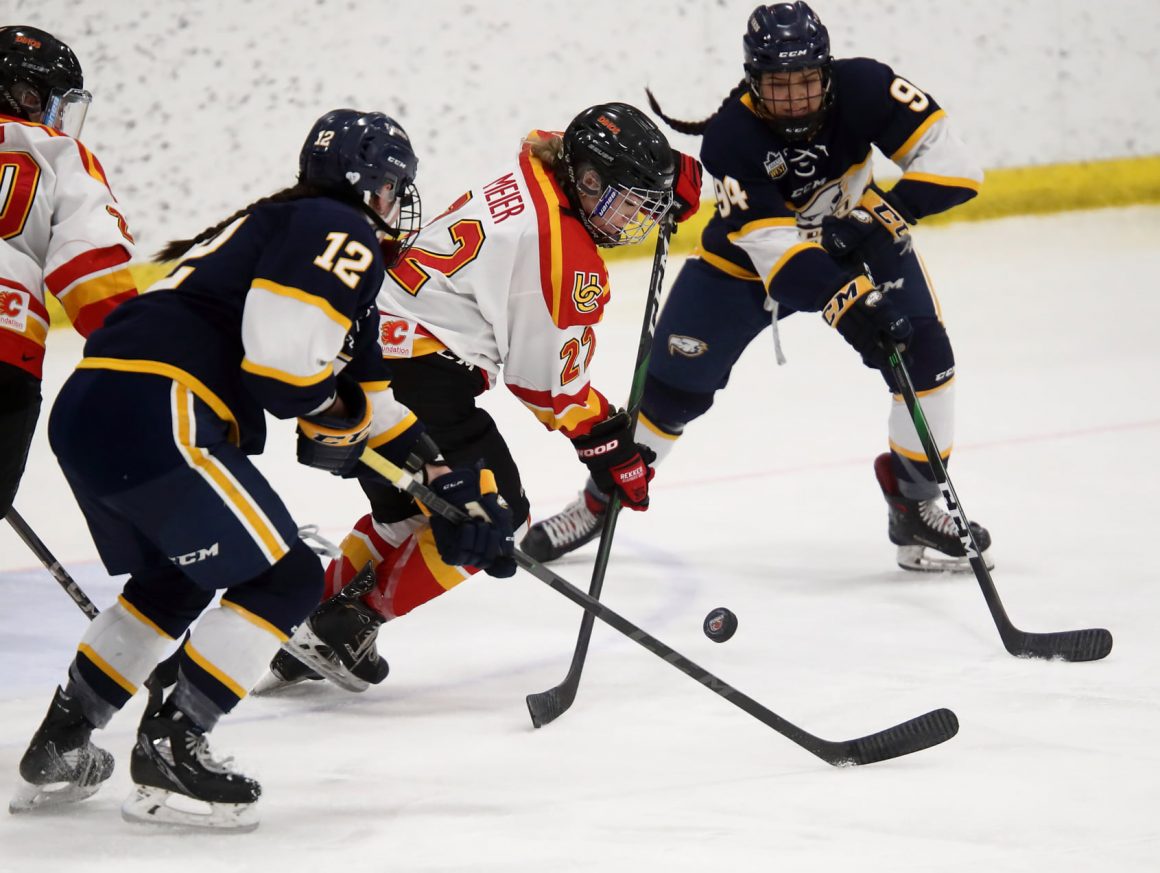
For Starters #3: How to run the breakout
By Rodrigo Verney, August 24 2022—
Eight seconds. That is the least amount of time you can successfully run a reliable hockey play from the moment the game starts to the moment someone scores. That’s all it takes to shift the tide of a game to your side. From the moment the puck hits the ice, you will be in an intense battle for control. To take full advantage of this very short amount of time you have to dominate one of the most common situations you’ll find yourself on the rink: the breakout. In this edition, we will understand this situation and learn how to react to it with simple plays you can easily run with people you don’t know.
In this sport, it’s often the smallest edge that wins you the game and the breakout is one of the best examples. In hockey, you will constantly find yourself in control of the puck, but at your own end zone. It is now necessary to initiate the offense and resist the charging opposing team that’s rushing towards you and the puck. This situation is known as “breaking out” and knowing how to maneuver it can help you make the most out of a bad position.
We can develop a general situation to analyze our position and how to react to it. Let’s say that the puck was launched towards your goalie’s left arm and now sits in the end zone. In this situation, the left defenseman (LD) will be in charge of gaining control of the puck. Once he moves, the right defenseman (RD) will mirror his position. This will help your defense maintain a great defensive density while creating a passing opportunity to the weak side. So he will fall to the end zone as well. While this is happening, the other team is already converging towards the strong side, which is the side where the puck is. Now, the strong side is crowded, your LD is with the puck, and his teammate, the RD, is at the weak side waiting for the puck. You are ready to breakout.
The first thing that we have to learn to breakout is space management. Many have seen breakouts in which the LD passes to the center on the strong side. Unfortunately, what we see on TV is the best talent the world has to offer and this talent has a special way of making difficult situations look pretty easy. Pretend as if the other team players are cones. If you have to pass the puck to someone to get out of the end zone, why would you pass it to someone on the same side as so many cones? Always chuck it to your teammates on the weak side. Preferably, to your RD.
The RD has the control of the puck and should be looking to take advantage of the, relatively, low defensive pressure. The opposing team will reassemble and put some men on the puck to slow down your fastbreak opportunity. That is why there is no time left to waste. The RD should be looking for a straight pass to his accompanying right wing (RW) or meet the centre after he drops back to his position. Either will advance the ball to more agile players and double your chances of scoring on a sparse defense.
The RD will essentially create two opportunities. Either his RW will receive the puck and run to kickstart an offense or the centre will run the offensive response. These two cases are great to generate a quick response, but it can run into a wall quickly. More specifically, a human wall as you have to constantly deal with the impending reorganization of the opposing team’s defense. Hence, it is necessary to think of a strategy that can be as quick as it is powerful.
One of the many approaches to this problem is to call out the left side wing over to the strong zone in an effort to overload it. This will benefit either of the receivers of the RD pass because of two things. First, the pass from either of the players will be shorter. This makes the pass less likely to get intercepted while ensuring less time will be spent waiting for the pass to connect. Second, this overloading technique pushes the defence back while increasing the offensive volume on one side of the rink.
The breakout is a powerful situation that can result in a quick point on the board if performed by a team that knows what to do with it. Chances are these won’t be the teams that you will find on a random game with some friends. This is why you should never be silent during a game. Be it on the stands or on the rink, communication is key to running a successful offence. Establish it early on in the game and make sure everyone is on the same page to run the breakout successfully. Once everyone is connected, the breakout can consistently create a quick scoring situation.
